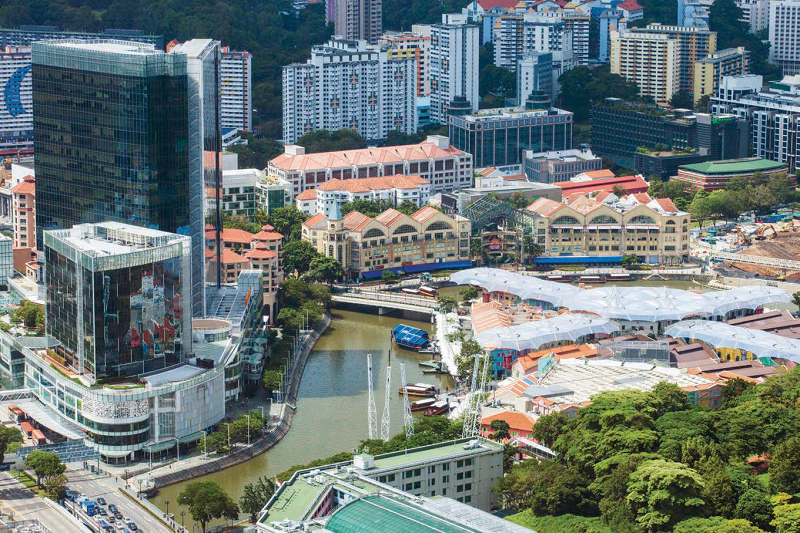Residential market: Going against the tide
By Lee Nai Jia
/ DTZ |
There has been much pessimism in the private residential market since the start of the year, with the release of a series of economic data suggesting subdued economic growth.
Mixed signals from China’s economy and a potential UK exit from the European Union added to the uncertainty, making buyers hesitant to enter the market as they anticipated a further decline in prices. News that the government would not be lifting the cooling measures during Budget 2016 also diminished investor sentiment. The confluence of factors led to sales volume falling to a level (about 13,500 units a year) reminiscent of the global financial crisis in 2008. Home prices have fallen 9.1% since the total debt servicing ratio framework was implemented in 3Q2013.

Nonetheless, there are signs that the market is stabilising to a new equilibrium and market activity is picking up. Private-home sales improved 10.4% to 14,172 in 2015. In 1Q2016, 2,833 private homes changed hands, up 7% y-o-y. While the increase in vacancies from 5.2% in 2013 to 7.5% in 2015 remains a concern, especially for the rental market, it has not reached the level experienced during the Asian financial crisis.
Advertisement
Suppressed demand
With the residential market considerably weakened, homebuyers are wary of the “oversupply” of homes, owing to more completions and slower sales. Statistics suggest, however, that their concern may be overstated. Based on past trends, the annual demand from first-time buyers working in Singapore is about 33,500 homes — assuming all are purchasing their own homes. Based on the assumption that half of the vacant units are already owned, the number of private unsold homes (pipeline and completed) and annual public housing comes up to about 37,000 units. If we include purchases from foreign investors and second-time homebuyers, it is likely that demand will equate with supply. With the economy expected to expand 1% to 2% and the low mortgage rates expected to remain, housing demand is unlikely to be curtailed by a lack of affordability.
While this simple computation suggests the market is at an equilibrium, the assumptions leading to the derivation of the figures may indicate that it is premature to conclude so. First, we assumed that everyone would own their homes and the demand for public and private homes would be sorted based on an individual’s income level. Unfortunately, uncertainty pushes more people to the public housing market or to stay with their parents. Next, the uncertainty of when the cooling measures would be lifted also deterred foreign buyers and buyers from acquiring their second homes for investment. Thus, the problem originates from a suppressed demand rather than an oversupply.
The unpredictability of the market also caused some segments of the market to face slower sales. Based on caveats lodged in 1Q2016, 57% of the homes purchased were smaller than 100 sq m. Owing to the additional buyer’s stamp duty, buyers are willing to buy only smaller homes that command a lower quantum. Besides affordability, the sense of regret and monetary loss is minimised if the measures are lifted.
A lack of transaction activity further led to a perception of oversupply of three- and four-bedroom units in the current market. However, these larger units proved to be more value for money in the long term. They offer higher price discounts, owing to the lack of demand, and have higher capital growth potential. As the market recalibrates to meet the new demand and cope with the regulatory constraints, bigger homes, especially those with freehold tenure, will become scarce. Alternatively, owners of smaller homes will find it challenging to sublet or dispose of them in the future, unless their homes are in choice locations.
To wait or not to wait?
As housing price cycles become shorter, the timing of entry has become more critical for investors with shorter horizons. The uncertain global economy, coupled with the cooling measures, does make waiting an attractive option.
Nevertheless, it is an opportune time for first-time homebuyers or upgraders to enter the market. They do not incur additional buyer’s stamp duties and are able to enjoy the price discounts offered by sellers who are willing to partially absorb the stamp duties. More importantly, they are able to lock in their loans at lower mortgage rates, with interest rates likely to rise in the future.
Advertisement
Lee Nai Jia is associate director and regional head of research (Southeast Asia) at DTZ. He can be reached at naijia.lee@dtz.com.
This article appeared in The Edge Property Pullout, Issue 729 (May 23, 2016) of The Edge Singapore.
https://www.edgeprop.sg/property-news/residential-market-going-against-tide
Tags: |


Follow Us
Follow our channels to receive property news updates 24/7 round the clock.
Subscribe to our newsletter
Advertisement
Advertisement
Advertisement
Search Articles